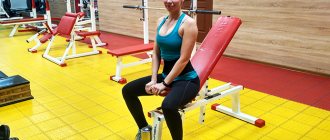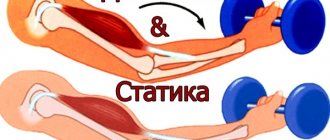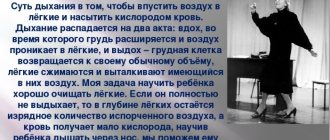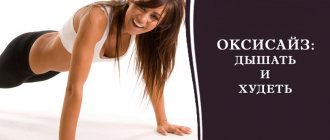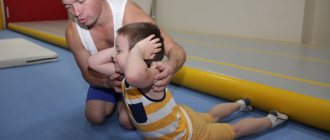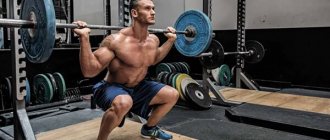Tendons form protrusions and pits where they attach to bones.
It is by these characteristics that zoologists and paleontologists learn which dinosaurs were strong and which were not.
After all, tendons are sometimes much more important for physical strength than muscles.
This rule also applies to humans. Therefore, real athletes pay special attention to training muscle ligaments.
This article describes in detail how to pump up the tendons in your arms.
What it is?
Ligaments are elastic connective tissue between bones. Their function is to support the joint and prevent it from moving in the wrong direction.
Tendons are the connections between muscles and bones that serve as conductors between these tissues.
Both contain elastic and collagen fibers. Thanks to the former, these fabrics are characterized by stretchability, and the latter ensure their strength. In this case, the collagen component predominates in the ligaments. During movement, tissues tend to stretch. That is why regular training of ligaments and tendons allows you to develop them, achieving better elasticity, and therefore mobility.
How to do gymnastics correctly?
When performing a set of exercises to strengthen ligaments and tendons, there is a lack of synchronism in the development and adaptation of muscle tissue. This is because it responds to training more quickly than the slower ligamentous tendon complex. Therefore, it is important to take this point into account to avoid injury.
When training ligaments and tendons, you must follow the following recommendations:
- When training with a chain, it is important to remember that the object of development is the body, so you should not tear the equipment, but create a dense force wave.
- Breathing should be even and calm, movements should be smooth.
- You should not be nervous when performing a set of exercises. This is the only way to avoid headaches and stress.
- Each exercise is performed from one to five times, the break between them is 30-90 seconds.
- If you experience rapid heartbeat, shortness of breath or physical discomfort, it is recommended to pause, calm down and only then return to training.
- You need to start the exercises with low tension. Gradually move on to longer and more complex movements.
- The full complex is performed at least twice a week and no more than an hour.
- In order to prevent sprains of tendons and ligaments, it is important to perform a good warm-up with exercises for the back, arms and chest.
- The load is increased in stages, observing the technique of performing the elements.
- It is useful to include supplements in your diet that strengthen ligaments and joints.
Ways to strengthen ligaments and tendons
To avoid injuries to ligaments and tendons, they need to be strengthened and “nourished”. Moreover, this must be done simultaneously in several directions. This complex includes:
- Balanced diet.
- Special preparations.
- Physical exercise.
Diet for ligaments
Good nutrition will perfectly strengthen the ligaments, make them strong and elastic, which will protect against accidental injuries. What you should pay attention to in nutrition. Such nutrition should become a lifestyle; only in this case can one hope for good results. It is also important to give up unhealthy foods and monitor your weight.
Weight normalization
Proper nutrition means normalizing body weight. Extra pounds create additional stress on the musculoskeletal system, including ligaments. It should be remembered that excessive dieting can also lead to negative consequences.
A person’s diet must contain fats, proteins, and carbohydrates, that is, the diet must be balanced.
Prohibited and permitted products
The consumption of foods containing preservatives and dyes, which interfere with the normal absorption of calcium and phosphorus, also negatively affects the musculoskeletal system. The body does not receive these important elements through food and begins to extract them from the musculoskeletal system. As a result, ligaments and tendons suffer.
It is advisable to exclude all these foods from the diet; instead, you need to eat those that contain large amounts of vitamins C, E, B12. After all, they are simply necessary to strengthen tendons and ligaments. Vitamin E is found in large quantities in foods such as:
- carrot;
- parsley;
- rose hip;
- sea buckthorn;
- wheat sprouts;
- gray bread.
And the required amount of vitamin C can be obtained by including citrus fruits, tomatoes, cabbage, sweet peppers, kiwi, currants, and gooseberries in your diet.
Collagen and proteins
An important component for connective tissue is collagen. Thanks to it, the tendons become elastic and can easily cope with loads. Collagen is contained in dishes that are prepared on the basis of gelatin - jellied meat, jellied meat, jelly.
Eating foods such as chicken eggs, liver, and beef will be very useful for strengthening ligaments and tendons.
They contain vitamin D and essential amino acids. An equally important product is fish. The fats it contains help protect tendon fibers from various overloads. Don't forget about dairy products, because they are a source of calcium, necessary for bones and joints.
Preparations for strengthening ligaments and joints
Often, the amount of nutrients and vitamins that a person receives with food is not enough to strengthen the musculoskeletal system. In this case, it is necessary to take care of additional nutrition for ligaments, joints and bones, which dietary supplements can provide. They are dietary supplements that are taken with food.
Dietary supplements are not medications and cannot solve radical problems, but they are very effective for preventing diseases and strengthening joints, bones and tendons.
In addition, supplements have a number of advantages over traditional medications. Dietary supplements contain only natural ingredients, have a minimum of side effects, and are not addictive. In addition, strengthening ligaments with the help of dietary supplements will cost less than treatment with medications. Preparations that are intended to strengthen connective tissue, joints and bones may contain:
- chondroitin;
- glucosamine;
- collagen;
- vitamins.
The most popular drugs for the health of joints and ligaments are dietary supplements containing chondroitin and glucosamine. The complex action of these two substances will effectively protect and restore damaged areas of ligaments and joints:
- Dietary supplements with chondroitin are excellent chondroprotectors; they protect and strengthen joints, cartilage, ligaments, and tendons. Since chondroitin is a substance produced by the body itself, there are absolutely no side effects.
- Dietary supplements with glucosamine have a positive effect on the metabolic processes occurring in connective tissue and on its structure. Since the active substance of this drug is part of the cartilage, bones, and skin of blood vessels, it has a complex effect on the entire body. Dietary supplements with collagen are a must-have drug for strengthening ligaments. In addition, they stop the inflammatory process, provide additional nutrition and protection for the ligamentous-tendon complex.
Dietary supplements may contain only one component, but most often the supplement contains two or three active substances, for example, glucosamine with chondroitin or collagen with vitamin C. Calcium, vitamin D, and other vitamins and minerals should be taken as auxiliary drugs to these dietary supplements.
Special exercises
In addition to proper nutrition and the use of dietary supplements, special exercises must be performed to prevent sprains. They are needed to provide a static load on certain ligaments or tendons.
The effectiveness of these exercises was proven at the beginning of the 20th century by the famous strongman Alexander Zass. He was far from a major athlete, but the way he broke chains and bent metal bars in the arena was amazing. Iron Samson (as Zass was called) believed that all strength lies not in muscles, but in tendons and ligaments.
He even developed a special set of isometric and dynamic exercises with chains, a barbell, and a bag of sand. Today many people have heard about this complex.
The feasibility and effectiveness of exercises to strengthen ligaments is an obvious fact. For example, using resistance bands and dumbbells is good for the arms. You can also perform exercises on the horizontal bar, push-ups, or handstands. Ligaments in the lower extremities can be trained by jumping rope or squats.
Exercises with chains
Alexander Zass is a famous athlete and strongman who has developed a special training system with chains and bags. In his opinion, strength lies not in the muscles, but in the ligaments and tendons at the base of the muscles.
He never had a large physique. However, the demonstration of his power is amazing. He is able to break chains and horseshoes, tie metal rods and restrain horses rushing in different directions. He knows exactly how to strengthen ligaments and tendons, and offers a set of exercises he developed for training.
To perform them, you should purchase chains at the store and attach handles to them, as well as removable loops from belts to support your legs. The length of the projectile is equal to the distance from the floor to the tips of the fingers of an outstretched hand. At the initial stages of training, the chain can be replaced with a tape expander. Before you start performing the elements, it is important to warm up and normalize your breathing.
Next, we’ll look at how to strengthen ligaments and tendons using the Alexander Zass method.
Exercises for training by Alexander Zas
Hello dear martial arts fans. In this topic I would like to tell you about tendons, why training them is important for a fighter, and about the method of training tendons by Alexander Zass “Iron Samson”.
So, let's begin. What are tendons and why develop them?
Tendons are the connective tissue that attaches our muscles to our bones; if they weren’t there, our body would simply be jelly. By the way, in terms of strength, tendons are second only to bones, and this is actually the difficulty of training them. For any fighter, tendons are very important, since it depends on the training of the tendons whether you can strike correctly, since the tendons transmit the force from muscle contraction to the bone apparatus and set the body in motion.
Alexander Zass system.
Of all the different systems for tendon training, the system of Alexander Zass rightfully takes the first place. The best example of the operation of this system is its founder himself, who became famous for his superhuman strength. At that time, he performed in a circus troupe and performed mind-blowing tricks. He bent metal beams, tore thick chains, lifted construction beams with his teeth, holding on to special fasteners, lifted and carried a horse, held two horses that ran in different directions, this list goes on and on. The most interesting thing is that Zass weighed only 60 kilograms; the audience even suspected a catch, because they could not believe that such a thin athlete could lift such a huge weight. Because of this, Iron Samson even had to gain weight up to 80 kilograms in order to acquire a marketable appearance. Zass achieved all this thanks to his own tendon training system. His system includes isometric and static exercises, as well as tensioning the entire joint apparatus (developing the connection between tendons and joints), and includes exercises with a chain and a bag, which I will explain below. Tension is practiced for 10 - 20 seconds, with normal nutrition and practice for 1 minute, breathing should be calm and not sharp, as when lifting heavy weights in bodybuilding. Each exercise is performed about 5 times with breaks of 30 seconds. There is also advice to check your progress every week. To do this, take the chain and try to stretch it at the bottom so that the load goes on the neck muscles, release the chain, and if your arms go up on their own, then everything is fine and progress is being made.
Exercises by Alexander Zass.
Zass has developed 2 sets of exercises; to perform them you will need a chain, two tubes and wire to make handles.
1 complex:
- Stretch the chain with your left arm bent, holding the end of the chain in your straight left hand.
- Stretch the chain above your head.
- Stretch the chain in front of your chest with your elbows bent.
- Stretch the chain behind your back. Especially tighten your triceps.
- Pull the chain forward from your back.
- Wrap the chain around your chest and inhale, contracting your pectoral muscles.
- Place the chain fastenings on your legs, and grab the other fastenings with your hands. Tighten your trapezius and arms.
- Stretching the chain, focusing on the deltoids and triceps.
9.Stretching the chain from the leg.
10.stretching the chain on the thigh.
- Stretching the chain wrapped behind the neck.
- Lying in an upright position.
- In a handstand.
- Stretching with your arm and leg at the same time. Aimed at developing the quadriceps femoris muscle.
2 complex:
This concludes this article, good luck to you!
Found an error? Select it and press Ctrl+Enter
Source: xtremefight.ru
Isometric exercises for arms
The following complex is proposed to achieve this goal:
- The end of the chain or expander is held with one outstretched hand, and with the other, bent at the elbow joint, it is stretched. Then the position of the hands is changed. The force should come from the chest and deltoid muscles.
- Raise your hands above your head a little wider than your shoulders and begin to stretch the chain, as if trying to break it. The force comes not only from the limbs, but also from the shoulder girdle and chest.
- The arms are placed behind the back so that the elbows are down and the hands are above them. With force from the triceps, they begin to stretch the chain or tape of the expander.
- Hands bent at the elbows are placed in front of the chest. With the force coming from them and the chest muscles, the chain is stretched.
- The arms are extended behind the back, the elbows are directed in different directions, the thumbs are turned towards each other. With tension coming from the triceps, as well as from the pectoral and latissimus muscles, a chain or expander is stretched.
- While exhaling, they wrap the projectile around the chest, and while inhaling, they try to tear it apart with the pectoral and latissimus muscles.
Rules of tendon gymnastics from Iron Samson
- the subject of your training is the body, so you shouldn’t break the chain, your task is to create a dense body wave, and the chain will break itself
- you should breathe calmly, without straining your breathing with effort; you need to exercise against the background of calm breathing
- the force wave should be smooth and cover the entire body
- you should develop the natural strength of good nature and train without nerves - this will help avoid protruding veins and headaches
- listening to the arrival of strength - that new energy and feeling of uncertainty after recovery
- exercises are performed from 1 to 5 times with standard pauses between them - 30-90 seconds
- if your heart is pounding, your breathing is deepening, the force wave is breaking and bodily discomfort appears, you should stop, calm down, massage the muscle until a comfortable, gentle wave appears
- start with short voltages, don’t rush, approach longer ones gradually
- perform 5-8 favorite exercises daily
- full strength training should be done twice a week and last no more than an hour
Tendon exercises with chains
Chains for classes are purchased in the store, handles and removable belt loops are attached to them to support the legs. The length of the chains is selected from the floor to the outstretched arm. Chains can be replaced with towels at the initial stage (this will also train your grip strength).
Read also…. Doctor Bubnovsky - exercises for the spine
Before exercise, you need to warm up thoroughly, perform the exercises smoothly, and breathe evenly. Here it is better to underwork than to overextend yourself.
Isometric exercises from Zass
- We hold one end of the chain with a straight left hand, and stretch the other with a bent right hand. We change the position of the hands. We apply force with the chest, biceps and deltoids.
- Stretch the chain above your head, placing your hands slightly wider than your shoulders. We try to break the chain, applying force not only with our hands, but also with our shoulders, chest and lats.
- Stretching the chain with bent arms in front of the chest with tension in the arms and chest.
- Stretching the chain behind the back with tension mainly on the triceps: hand above the elbow, elbows pointing down.
- Stretching the chain behind the back, but with straight arms - also using the triceps, but with the participation of the pectoral and latissimus muscles: the hands are turned with the thumbs towards each other, the elbows look to the sides.
- Stretching the chain with the chest: while exhaling, we wrap the chain around the chest, then, while inhaling, we try to break it with the pectoral and latissimus muscles.
- We place our feet in leather loops attached to the ends of two chains, stretch the chains, tensing the muscles of our arms and trapezius.
- Alternately stretching the chain with your hands: first, one hand is at the top, the other is stretched down, then vice versa.
- Stretching the chain from the floor with one hand: fasten the chain with a loop to the foot and pull it up and towards you with the adjacent hand. The force is exerted by the biceps.
- We try to break the chain by pulling it onto the upper surface of the thigh. We pull down using the back and deltas, straining the thigh.
- Place the chain around your neck and press into the floor as if doing push-ups, placing the chain between your palms. We keep the body tense, trying to break the chain with the triceps and deltoids.
- We tear out the hook from the floor and from the wall.
Isometric leg exercises
To train the ligaments and tendons of these parts of the body, the following complex is proposed:
- The feet are placed inside the leather loops and the chain is stretched, squeezing the muscles of the trapezius and arms.
- Stretch the chain over the outer thigh and pull it down, using the back and deltoid muscles. At the same time, the thigh also tenses.
- Use your foot to hold the chain by the loop and stretch it upward with your adjacent hand. The tension comes from the biceps.
- Position - palms resting on the floor, as during push-ups, the chain is draped around the neck and placed between the palms. The body is tensed, trying to break the chain using the deltoids and triceps.
Dynamic exercises
This complex is performed using another apparatus - a bag of sawdust or sand, depending on the athlete’s preparation.
The list of exercises is as follows:
- Standing straight, feet shoulder-width apart, the athlete squats and lifts the bag onto his chest. He straightens up, holds the position for several seconds and places the weight on the floor.
- Standing straight, heels together, toes apart. The bag is placed on the chest and squatted, then raised above the head, arms extended upward.
- The projectile is placed on the shoulder, lifted up and turned at arm's length twice.
- Lying on your back, with the bag behind your head. They lift it with their hands, put it on their chest and do a bench press. Then they return to their original place. You need to do 10-15 repetitions.
- Lying on your back, place the bag on your feet and lift it up 10-15 times.
Zass exercises
Alexander Zass is a very famous strongman of the early 20th century, who developed his own training system with chains and bags. Alexander Zass was never very big; on the contrary, when he started performing in the circus, his biceps were only 38 cm, and he managed to break iron chains. The whole secret is in the Zass exercises, which train ligaments and tendons. Alexander himself believed that real strength does not lie in muscles, which he confirmed in practice. However, for a bodybuilder and a powerlifter this is not the case, since the former, in general, trains in order to build muscle mass, and the latter performs specific work that loads certain muscle fibers, without the strength of which his results will be very modest. But Zass exercises for training tendons and ligaments will have a positive effect on the training results of both bodybuilders and powerlifters.
Zass exercises develop the quality of transmission of force caused by muscle contraction through tendons and ligaments to the bone apparatus. It follows from this that this set of exercises does not destroy protein structures, so it does not interfere with, but even promotes, muscle recovery between dynamic workouts in the gym. However, the complex includes both isometric exercises with chains and dynamic exercises with a bag. To keep your workout routine going, you can train with a bag once a week, train with chains twice a week, and do light toning isometric training on the other days.
Zass isometric exercises
Ligament and tendon training according to the Zass system should not last longer than 15-20 minutes, so you can perform only 3-4 exercises in one workout. You should do 5 sets of each exercise, with 40-60 seconds of rest in between. During the exercises themselves, the load should gradually increase and decrease smoothly, the same applies to the distribution of the load between approaches. During heavy training, you should strain in the mode 75%-90%-95%-90%-75%, during tonic training 60%-90%-60%. Heavy training of ligaments and tendons - 2 times a week, toning - on the remaining days. For training, you will need 2-meter chains, to which you should attach handles on one side and loops on the other; however, ropes will also do.
During Zass exercises, it is very important to breathe correctly, exhaling with effort; the time to perform the exercise is the time of exhalation, so the time under load ranges from 2 to 8 seconds. You should start with two seconds of tension, gradually bringing it to 8 seconds. Alexander Zass practiced breathing exercises, which we recommend that you do too. The complex consists of 100 inhalations and exhalations. The athlete should take deep and noisy breaths through the nose and short, silent exhalations through the mouth. You should start with series of 4 inhalations and exhalations, with 3-5 seconds of rest between them, then move on to series of 8, and then 12 inhalations and exhalations. Combining ligament and tendon training with breathing exercises will definitely have a positive effect on your strength results and help build muscle mass.
A set of isometric exercises by Zass
| Alternating chain stretching - take the chain in your hands in front of you, bend one arm at the elbow 90°, leave the other arm straight, then try to break the chain, after which you switch hands. The force must be applied by the chest, biceps and deltoids. | Stretching the chain over the head - in the starting position, the arms are straightened and above the head, they should be placed slightly wider than the shoulders, in this position the athlete tries to break the chain. It is important to tense not only your arms, but also your shoulders, chest and lats. |
| Stretching the chain with bent arms - the chain is in front of the chest, the hands are opposite the elbow joint of the opposite arm, one hand is below, the other is on top, the chain is stretched between them and you should try to break it. It is important to strain not only your arms, but also your chest. | Stretching the chain behind your back - in the starting position, the chain is located in the lower part of the trapezius muscle, the elbows look down, so the hand should be higher than the elbow. And when an athlete, stretching the chain, tries to break it, the effort is made by the triceps. |
| Stretching the chain behind the back with straight arms - this exercise is also performed using the triceps, but the pectoral muscles and latissimus dorsi muscles are also tensed, so the elbows look to the sides and the hands are turned towards each other with the thumbs. | Stretching the chain with the chest - in the starting position, you need to try to exhale all the air from the lungs, and then wrap the chain around the chest and secure it, after which, inhaling deeply, try to break it with the strength of the pectoralis major and latissimus muscles. |
| Alternate stretching of the chain - one hand is at the top, the elbow is looking down, and the hand is also turned with the thumb down, and the second hand is below, in an extended position, holding the chain. The chain is stretched by the deltoids and triceps. Of course, you need to alternate hands. | Stretching a chain from the floor - this exercise is performed using two chains, which are attached at one end to the feet, which is why chains with handles on one side and loops on the other are needed. Your arms should be fully extended, and you should pull the chain up not only with your hands, but also with your trapezoid. |
| Stretching the chain from the floor with one hand - the chain is attached with a loop to the foot, and the adjacent hand, with the elbow bent at 90° and the thumb turned upward, pulls the chain towards itself. Arms and legs need to be changed, mainly the effort is carried out by the biceps. | Stretching the chain on the thigh - the chain is pulled onto the upper surface of the leg, after which the athlete begins to pull it down with his hands, trying to break it. The force is exerted through the deltas and back, but the hip should also be tense. Alternate your legs! |
| Lying emphasis - the chain is placed on the neck, the athlete takes emphasis on the floor, as during push-ups, and the chain is placed between the palms. The body should be kept tense, but you should try to break the chain with the triceps and deltoids. It goes without saying that the chain seems to press the athlete a little, that is, the arms are slightly bent at the elbow joints. | Handstand - before starting the exercise, the chain is attached to the floor and fixed behind the neck, the athlete stands on his hands, and, trying to move the body weight onto his fingers, makes an effort with his arms, back and neck. The exercise is very complex, requires the athlete to be able to coordinate movements and is not included in the main training complex of Zass. |
| Bends - the chain is attached at one end to the leg and the other to the neck, so the exercise is performed only by those athletes who are aware of what they are doing, and have also already managed to pump up their neck . The bends are made in both directions, mainly the trapezius muscle of the back is tensed. | Neck extension - for this exercise you will need a chain with two loops that are attached to the leg and to the head. The length of the chains should be such that you have to bend a little. When you secure the chain, you should try to break it by straightening your body upward, using the force of your neck and back. |
| Leg extension - with your free hand, grab the support, bend the arm with the chain so that the biceps takes the position of peak contraction, the other end of the chain is fixed to the foot with a loop. The leg is in a bent position so that the heel is at the level of the knee joint and buttocks. The force is exerted by the quadriceps, glutes and hamstrings. | Leg abduction - in this case, the chain is fixed in the hands, and the other end is tied with a loop to the working leg. The athlete rests his hands on the handrail, and his leg, bent at the knee, is laid back so that the knee of the working leg is further than the knee of the supporting leg, after which, straining his biceps, the athlete tries to break the chains, moving his leg back. |
| Pulling out the hook from the floor - the fixed chain should be taken at the level of the knees, after which, using the efforts of your legs, back and arms, try to pull the hook out of the floor. To shift the load more to the back, the chain can be taken at approximately waist level. | Pulling out a hook from a wall - you should try to pull out a fixed chain using the force of the deltas, legs, back and arms. Place your feet wide, which should provide you with stability. The back is slightly rounded, but only in the upper part. Keep your neck straight. |
Important* before performing the exercises, you should warm up very well, you should feel a warmth and a pleasant burning sensation in your muscles, after which you can start training. When performing Zass exercises, you do not need to overexert yourself, you should breathe evenly, you should not blush, your veins should not protrude, your blood pressure should not increase, everything is done smoothly, with concentration. In this case, it is better to underdo it than to overdo it, because the likelihood of injury is very high!
Dynamic exercises by Zass
This set of exercises for training ligaments and tendons is performed using a bag. You can put sawdust or sand in the bag, choosing the weight of the bag in accordance with your training level. A set of these exercises can be used either during rest, then it will not interfere with your training, or you can include one such workout in a weekly split. Such a workout can last 30-40 minutes, in addition to tendons and ligaments, you will also be able to load your muscles, but for the most part it will not be contractile proteins that will be trained, but energy. Therefore, if you want to work on endurance, then Zass exercises with a bag are a good option to combine endurance training with training other non-muscular qualities.
1) Raising the bag to the chest - the athlete spreads his legs wider than his shoulders, the bag is on the floor, after which the athlete squats to parallel, takes the bag in his hands, and stands with it, placing the bag on his chest. In a standing position, with the bag on your chest, your knees remain slightly bent; linger in this position for a little while and return the bag to the ground. The approach takes 10-15 repetitions.
2) Lifting the bag up - in the initial position, the heels are together, the toes are apart, the athlete holds the bag with his hands on his chest. Then the athlete should squat down and squeeze the bag up, straightening his arms. This Zass exercise is reminiscent of squats with a barbell overhead, only during its execution, your arms must be bent and unbent.
3) Extension with one hand - the athlete holds the bag on his shoulder, holding it with a bent arm, after which he squeezes it up and, with his outstretched arm, turns the hand twice in both directions. The exercise is performed until positive failure, after which the hand is changed.
4) Press with a bag - the athlete lies on the floor, face up, the bag is behind his head, after which the athlete takes his arms back, takes the bag in his hands, places it above his chest, performs a press and returns the bag to its place. The exercise is performed in 10-15 repetitions.
5) Leg press - the athlete lies on the floor, face up, lifts his legs towards the body, places a bag on his feet and squeezes it upward with his legs 10-15 times.
Static training
A set of exercises for strength endurance must include the following elements:
- The barbell is taken onto the shoulders and raised onto the toes. It is necessary to maintain balance for as long as possible, at least 60 seconds. During the execution of the element, all muscle groups, ligaments and tendons are involved.
- The barbell is lifted onto the shoulders and squats, holding it with balance.
- Single exercises are performed with a weight that the athlete can hold.
- Reps with very heavy weight, free or in a Smith machine. To perform them, you need the assistance of two assistants to lift the projectile up.
- Hold the bar while lying down for as long as possible. Bending your arms or knees is allowed.
- Performing exercises with heavy weights in a shortened amplitude.
Achilles tendon stretching exercises
Before physical activity, it is necessary to develop the Achilles tendon using special exercises:
- Lunges with and without weights. Lunge forward with your right leg, while your left leg is bent behind you. Smoothly lower your torso forward. Then quickly switch legs while jumping. Execution frequency – from 10 to 15 times;
- Exercise on toes with weights. Take the dumbbells in your hands, lower them, stand on your toes and walk for 1 - 3 minutes. Then pause for a few minutes and repeat the exercise again. Make sure that your back is straight and your shoulders are straight while walking on your toes.
The following exercises will help you stretch the Achilles tendon on your leg:
- Sit on the floor , take a towel in your hands, and grab the convex part of your foot with it. Pull your toes towards you, while keeping your legs straight. Hold for 30 seconds. Do 3 times for each leg;
- Sit down and place a cushion-shaped object, such as a can of canned food, under the indentation in your foot. Pump the item back and forth for a few minutes. Perform 2 times a day;
- Sit on a chair , place a towel near your feet. Try to lift the towel with your fingers without lifting your heel. Repetition frequency – from 10 to 20 times. Over time, the exercise can be complicated by attaching some kind of weight to it;
- Starting position too , place your right foot on the knee of your left limb. Grab your fingers and pull them towards you. Maintain this position for about 20 seconds. Frequency of repetitions – 3 times for each leg;
- Stand near the wall , turn to face it, place 2 hands on it at shoulder level, put your right foot in front of your left (the distance between the right foot and the wall should be about 30 cm). Bend the knee of your right limb until tension appears in the calf muscles of your left leg (it should be straight). Repetition frequency: 10 times for each leg. There is only one version of this exercise - the back leg needs to be moved slightly towards the front and bent at the knee;
- Stretch your right hand forward and keep your left hand on your belt. Squat on your heels, trying to maintain your balance;
- Stand on the edge of the step platform so that your heels hang down slightly. Rise up on your toes, lifting one leg off the surface. On the count of 5, return to the starting position;
- Stand near the wall at a distance of 70 cm so that you can see it. Then press your heel against the wall and maintain this position for about 60 seconds. Then repeat for the other leg.
All these exercises help to stretch and strengthen the Achilles, then the likelihood of damage is minimal.
Tips for implementation
Exercises for tendons and ligaments must be performed in accordance with certain rules. This will protect you from injuries and sprains. Athletes should heed the following recommendations from experts:
- Ideally, a set of exercises is performed every other day. Each element is repeated 15-20 times in 2-3 approaches.
- Training with heavy weights should be carried out under the supervision of a trainer who will select the correct weight.
- It is recommended to use special bandages to protect the knees and tendons.
- The order of exercises should be changed regularly, for example, in one workout the back-arms-legs pattern is used, and in the next session the triceps-back-calves pattern is used. Thus, the tissues become elastic and less susceptible to injury.
- Performing exercises not completely makes it possible to increase the number of repetitions and make the tendons more resilient.
- If there are injuries or damage, classes are carried out using an expander. It allows you to correctly distribute and control the load on the body.
Main causes and degrees of sprains
There is such a thing as tight hamstrings. This term refers to the poor ability of tendon fibers to stretch and elongate.
Injuries to the hamstrings and knee ligaments occur in both athletes and people who lead a sedentary lifestyle. The main cause of injury is tendon failure in response to muscle contraction. A factor that increases the risk of tendon rupture or strain is the fixation of the muscle or tendon itself above its attachment to the bone.
In order to understand the pathogenesis of such an injury, it is necessary to know that the muscles that form the hamstrings have two main functions:
- extension of the thigh in the hip joint, placing the body in a vertical position,
- bending the shin at the knee joint, allowing you to reach the buttock with your toe.
If any part of the muscle is fixed while performing an action, a sprain or tear may occur. This is due to the fact that muscles are very elastic and can be stretched greatly, unlike tendons, which are denser and less elastic.
Injuries to the ligaments and tendons of the knee joint are usually divided into 3 types:
- Mild damage with minimal inflammatory manifestations and minor pain. Treatment is outpatient, recovery period is 1-2 weeks.
- Significant damage, there may be incomplete ruptures. A large area of inflammation, severe swelling, pain that increases as the swelling increases. There may be a local increase in temperature and subcutaneous hemorrhages over the site of injury.
- Complete rupture of the tendon or its separation from the attachment site. The patient feels a strong burning sensation, which develops into unbearable pain, severe swelling and an increase in local temperature appear in the first minutes after the injury. Visual bulging above the skin of the knee. Treatment is only surgical in a hospital. With the right approach to treatment and rehabilitation, recovery occurs within 4-6 months.
If an accident occurs and you suspect a hamstring or ligament tear, you should consult a doctor. Before being examined by a doctor or an ambulance arriving, first aid must be provided. The list of actions to provide assistance includes:
- cold to the injury site, you can use special cooling sprays,
- immobilization of the limb, unnecessary movements can aggravate the situation,
- pain relief for severe pain syndrome, this can be done with the help of drugs such as ibuprofen or diclofenac.
This type of injury is very common; to protect yourself, follow the safety rules when playing sports, warm up at the beginning of your workout, and avoid sudden movements.
Deadlift: execution technique for women
Many representatives of the weak half of humanity also dream of seeing themselves as strong and resilient. They are offered exercises with a barbell:
- Place your feet slightly wider than your shoulders, lightly touching the bar.
- Bending over, they take hold of it with their hands. For beginners, it is better to use a mixed grip.
- The back is in a neutral position, the shoulder blades are brought together, the legs are bent, the head is straight.
- Taking a deep breath, tense your abdominal muscles and, slightly straightening your legs, lift the barbell off the floor.
- The hips are pulled back and, holding the projectile close to the legs, raised to the level of the hips.
- When the body is at the top of the row, the hips are pushed forward and then the bar is lowered down.
- Start the exercise with 3-5 repetitions of 2-3 approaches.
Most women mistakenly believe that weight training is only for men. However, the inclusion of power lifting in a complex for the weaker sex has a number of advantages: it effectively burns adipose tissue, improves metabolism, allows you to acquire beautiful shapes, relieves back pain, tones muscles, corrects posture and pelvic position.
